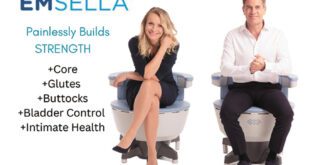 If you’re looking to reduce or perhaps eliminate your dependence on prescription lenses, consider vision correction options from Lake Eye. Lake Eye offers a range of procedures that can deliver clear, 20/20 vision to nearly everyone, regardless of age or vision problems. These safe, proven procedures can correct refractive disorders including nearsightedness (myopia), farsightedness (hyperopia) and abnormal curvature of the eye (astigmatism), reducing and in some cases eliminating the need for glasses and contacts.
If you’re looking to reduce or perhaps eliminate your dependence on prescription lenses, consider vision correction options from Lake Eye. Lake Eye offers a range of procedures that can deliver clear, 20/20 vision to nearly everyone, regardless of age or vision problems. These safe, proven procedures can correct refractive disorders including nearsightedness (myopia), farsightedness (hyperopia) and abnormal curvature of the eye (astigmatism), reducing and in some cases eliminating the need for glasses and contacts.
iLASIK – For Clarity Without Limitations
LASIK vision correction surgery has been around for decades and has provided clear, crisp vision to 10 million Americans and counting. iLASIK presents the latest and most advanced version, including revolutionary iDesign eye-mapping technology, which creates a customized map of the eye that is 25 times more precise than standard measurements, and the exactitude of the femtosecond laser, for vision correction that is 100% blade-free. iLASIK is safe, takes only minutes to perform, creates minimal downtime and provides amazing improvements many notice the very same day.
Lake Eye’s Board Certified ophthalmologist Dr. Vinay Gutti is the first local eye surgeon to be qualified to perform iLASIK, making Lake Eye the smart choice for iLASIK vision correction.
Photorefractive Keratectomy (PRK) – An Effective Alternative to LASIK
Certain conditions like chronic dry eye and thin corneas can preclude LASIK as a choice for vision correction surgery. For many, photorefractive keratectomy, or PRK, is a viable option. PRK is a laser eye surgery that treats refractive vision errors by correcting the shape of the cornea. FDA-approved since 1995, PRK was the original laser refractive eye surgery, in use years before LASIK.
PRK optimizes the shape of the cornea, improving light refraction and correcting refractive errors so effectively that 97% of people achieve 20/20 vision or better within a year following surgery, mirroring the effectiveness of LASIK. Healing from PRK surgery takes the eye, it is considered optimal to be at least longer than LASIK, and vision may fluctuate during the first few weeks, but will stabilize enough to provide dramatic improvement that will get even better over time.
PRK doesn’t involve creating a flap in the cornea, so it may be a better choice for people whose lives include rigorous athletic or physical demands, or an increased risk of eye injury. PRK is also an option for cataract patients with certain intraocular lens implants whose vision requires additional refinement.
PRK may be suitable for people who are 18 and older, though due to possible changes in 21. Patients should have healthy corneas and good overall eye health, a refractive error that can be improved with PRK, and no change in vision during the previous year.
Certain eye and general health conditions, including corneal diseases or abrasions, advanced glaucoma, uncontrolled diabetes and other problems may prevent candidacy for PRK. Your Lake Eye doctor will be able to assess your candidacy for PRK.
Refractive Lens Exchange – Vision Correction Beyond the Ordinary
People with problems like age-related near vision loss (presbyopia) and/or severe farsightedness (hyperopia) are often told that LASIK, PRK or implantable lenses may not be suitable for them. That doesn’t mean they’re out of options. Refractive lens exchange, or RLE, is a procedure in which your surgeon replaces your eye’s natural lens with a custom-selected intraocular lens (IOL) designed to correct your specific vision problems and create clear, crisp vision. IOL types include monofocal, multifocal and accommodating. The IOL you and your surgeon select will depend on your condition and goals.
RLE can provide dramatic improvement in even serious cases of presbyopia, moderate to severe hyperopia, or both. Until RLE, people with both conditions were generally out of options other than powerful prescription lenses, but RLE provides new possibilities to restore clear vision at all distances.
RLE is designed for people 40-50 and older with nearsightedness, farsightedness and/or astigmatism, and can also treat dysfunctional lens syndrome, which is an early clouding of the lens, common in people ages 50+.
The procedure typically takes about 10 minutes per eye. Vision usually improves immediately and continues to stabilize within a few days. Everyday activities like driving are usually resumed in about a week.
No matter what your age or vision challenges, Lake Eye has options for nearly everyone. To discover safe alternatives to the hassle, inconvenience and limitations glasses, contact Lake Eye today.
352-775-1533 . LakeEye.com
 Central Florida Health and Wellness Magazine Health and Wellness Articles of the Villages
Central Florida Health and Wellness Magazine Health and Wellness Articles of the Villages



